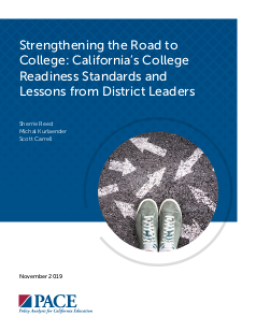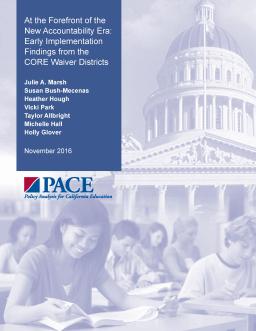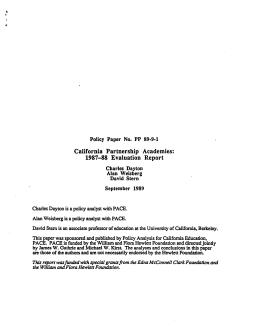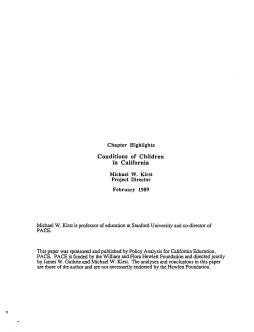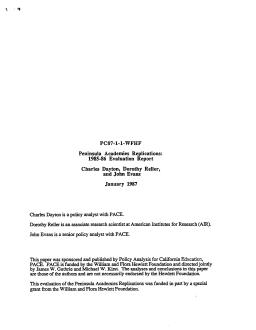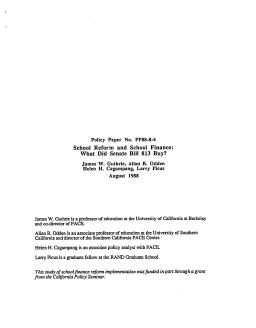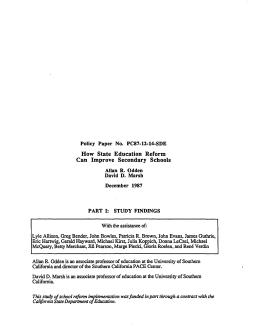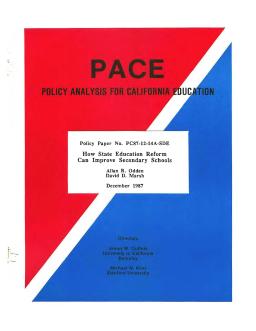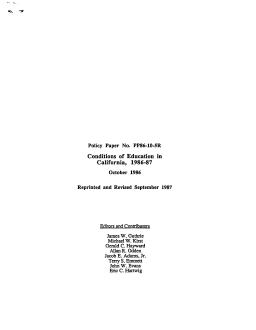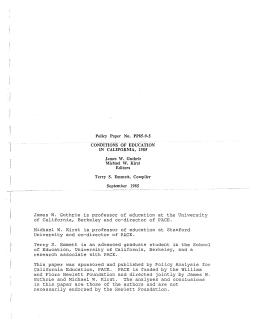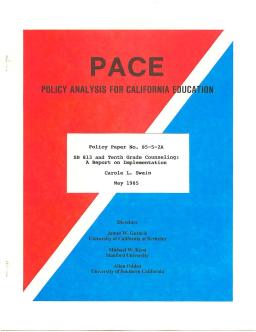Summary
Summary
Summary
Summary
California and the US are undergoing a cultural shift in school accountability policies towards locally-determined measures of school performance. Lessons can be learned from the CORE districts, which developed an innovative accountability system, emphasizing support over sanctions, and utilizing multiple measures of school quality. The CORE districts' measurement system and collaboration hold promise for improving local systems, but efforts to build capacity remain a work in progress.
Summary
Summary
This report commemorates the fifth anniversary of the Getting Down to Facts project, which sought to provide a thorough and reliable analysis of the critical challenges facing California’s education system as the necessary basis for an informed discussion of policy changes aimed at improving the performance of California schools and students. The report focuses on the four key issues that received emphasis in the Getting Down to Facts studies: governance, finance, personnel, and data systems.
Summary
Summary
Summary
Summary
Summary
Summary
Summary
Summary
Summary
This technical report provides an overview of California's educational system, intended for educators, public officials, journalists, and informed citizens. With over four million students and a $17 billion annual cost, the state's school system is vast and complex. The report offers comparisons of California's education system to itself in prior years and other states, revealing patterns of change and suggesting future trends. These trends serve as a guide for the many facts and figures presented in the report.
Summary
Summary
Comprehensive school guidance programs attempt to address a range of student needs on personal, social, career, and academic dimensions. Many guidance and counseling programs, however, have suffered cutbacks in recent years even though students continue to be in need of guidance, and students themselves have expressed a desire for assistance.
